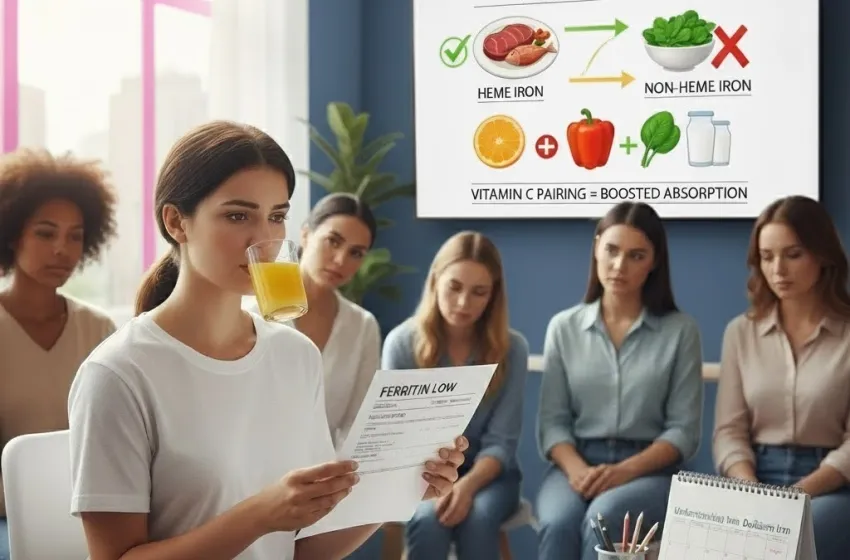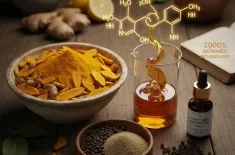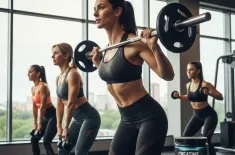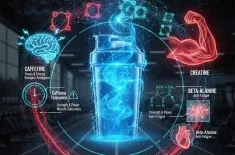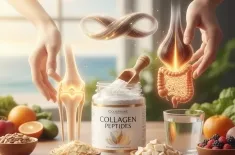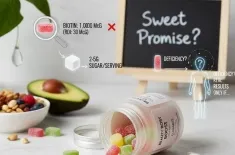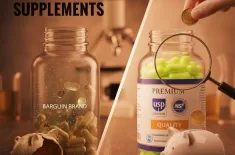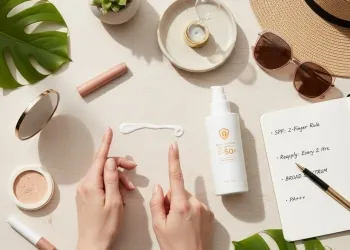Learn the causes of low ferritin in non-vegans, especially menstruating women, and how Vitamin C pairing boosts iron absorption.
Iron deficiency (ID) is frequently—and understandably—associated with plant-based diets, given the differences in iron bioavailability. However, this critical nutrient deficiency is a global public health concern that extends far beyond the vegan and vegetarian communities. It is, in fact, the most common nutritional deficiency worldwide, impacting billions of people, including a significant portion of the population who regularly consume meat, poultry, and fish.
This comprehensive guide delves into the realities of iron deficiency in non-vegans/vegetarians, exploring the key populations at risk (such as menstruating women), the critical signs and stages, and the most effective strategies for improving iron absorption regardless of dietary preference.
The Scope of the Problem in Omnivorous Populations
While the discussion often centers on plant-based diets, the prevalence of iron deficiency in non-vegans/vegetarians remains alarmingly high, particularly in vulnerable groups. The root cause is not always a lack of iron-rich foods in the diet; rather, it often stems from issues of increased iron loss, poor absorption, or a combination of the two.
For instance, studies consistently show that women of reproductive age, irrespective of their meat consumption, bear the heaviest burden of iron deficiency and iron deficiency anemia (IDA). This is a direct consequence of physiological iron loss.
Addressing the High Incidence in Menstruating Women
Monthly menstrual blood loss is the single greatest cause of iron deficiency in women of childbearing age who are non-vegans/vegetarians.
- Heavy Menstrual Bleeding (HMB): Women with heavy or prolonged periods (known medically as menorrhagia) lose a substantial amount of iron each cycle. If the amount of iron lost exceeds the iron absorbed from their diet, the body’s iron stores are gradually depleted. This chronic, cyclical loss is often underestimated as a major contributor to deficiency, even with a diet rich in heme iron sources like red meat.
- Pregnancy and Childbirth: The demand for iron increases dramatically during pregnancy to support the growing fetus and placenta and to account for blood loss during delivery. If a woman enters pregnancy with pre-existing low iron stores, the risk of deficiency is extremely high.
- Frequent Blood Donation: Regular blood donors, even those consuming meat, are at an elevated risk because each donation removes a significant quantity of iron.
Beyond physiological losses, other factors contributing to ID in omnivores include:
- Gastrointestinal (GI) Blood Loss: Chronic, slow blood loss from the GI tract due to conditions like ulcers, inflammatory bowel disease (IBD), celiac disease, or regular use of non-steroidal anti-inflammatory drugs (NSAIDs) is a common cause in men and postmenopausal women.
- Malabsorption Issues: Certain medical conditions (e.g., celiac disease, Crohn’s disease, Helicobacter pylori infection) or even common procedures like gastric bypass surgery can impair the body’s ability to absorb iron, making intake irrelevant.
Understanding Iron Types and Iron Absorption
To combat deficiency effectively, it’s crucial to understand the two forms of dietary iron and how the body handles them.
Heme Iron
- Source: Found exclusively in animal products, primarily meat, poultry, and fish.
- Absorption Rate: Heme iron is highly bioavailable, meaning the body absorbs it efficiently, typically ranging from 15% to 35%. Its iron absorption pathway is less affected by other dietary components.
- Significance for Non-Vegans: The heme iron content in red meat is why a meat-eating diet is generally considered protective against deficiency. However, relying solely on this source is not enough for individuals with significant iron loss.
Non-Heme Iron
- Source: Found in both plant foods (legumes, grains, dark leafy greens) and animal foods (it makes up about 60% of the iron in animal flesh).
- Absorption Rate: Non-heme iron is much less bioavailable, with absorption rates ranging from a mere 2% to 10%. This is because its absorption is heavily influenced by enhancing and inhibiting factors present in the meal.
- Inhibitors: Key inhibitors include:
- Phytates: Found in whole grains, legumes, nuts, and seeds.
- Polyphenols/Tannins: Found in tea, coffee, cocoa, and some spices.
- Calcium: Found in dairy products and supplements.
For non-vegans/vegetarians, the challenge is that even their meat-based meals contain a significant amount of the poorly absorbed non-heme iron. Furthermore, the meal might be sabotaged by common inhibitors—drinking coffee with breakfast, or having a glass of milk with dinner.
Stages of Deficiency and Low Ferritin
Iron deficiency is a spectrum that progresses through stages, with noticeable deficiency symptoms only appearing in the later phases. Diagnosis requires a blood test, which often measures ferritin—the protein responsible for storing iron in the body.
Stage 1: Iron Depletion
- Key Marker: Low ferritin levels (below a certain threshold, often $<30 \mu\text{g/L}$), indicating depleted iron stores.
- Symptoms: This stage can often be asymptomatic, or present with subtle, non-specific issues.
Stage 2: Iron-Deficient Erythropoiesis
- Key Marker: Iron stores are almost exhausted, and iron transport to the bone marrow is limited. Other blood markers like Transferrin Saturation (TSAT) drop.
- Symptoms: Constant fatigue often becomes noticeable, as well as reduced endurance and cognitive function, even without full-blown anemia.
Stage 3: Iron Deficiency Anemia (IDA)
- Key Marker: Hemoglobin levels drop below the normal range.
- Symptoms: Classic signs include severe fatigue, weakness, pale skin (pallor), shortness of breath, heart palpitations, pica (cravings for non-food items like ice), and brittle or spoon-shaped nails (koilonychia).
Low ferritin is a crucial early indicator. If a non-vegan/vegetarian is experiencing constant fatigue and is told their hemoglobin is "normal," a low ferritin level is often the key to diagnosing iron deficiency before it progresses to anemia. Treating the deficiency at the low ferritin stage can prevent the onset of more severe deficiency symptoms.
Maximizing Iron Absorption: The Best Methods
Regardless of the primary dietary source (meat or plant), the strategy for maximizing iron absorption is centered on two pillars: enhancers and avoiding inhibitors.
The Power of Vitamin C Pairing
The single most effective dietary strategy for enhancing non-heme iron absorption is consuming it simultaneously with a source of Vitamin C pairing.
- Mechanism: Vitamin C (ascorbic acid) captures non-heme iron and converts it into a more soluble and absorbable form, even in the presence of strong inhibitors like phytates. Adding just $50\text{mg}$ of Vitamin C to a meal can significantly increase non-heme iron absorption.
- Practical Vitamin C Pairing:
- Squeeze lemon or lime juice onto your meat, fish, or vegetable dishes (e.g., steak with a squeeze of lemon, spinach salad with a citrus-based dressing).
- Add tomatoes, bell peppers, or broccoli to meals containing iron-rich foods.
- Drink a small glass of orange juice (between 100-150 ml) with an iron supplement or an iron-rich meal.
Strategic Consumption of Heme Iron
For non-vegans/vegetarians, heme iron offers a highly reliable source, but it can also enhance the iron absorption of non-heme iron when consumed together in the same meal.
- The "Meat Factor": A small amount of meat, poultry, or fish consumed with plant-based iron (the "meat factor") significantly boosts the absorption of non-heme iron.
- Focus on Nutrient Density: Prioritize lean red meat a few times a week, as it is the most concentrated source of heme iron.
Avoiding Inhibitors at Mealtime
This is often where non-vegans/vegetarians fail, unknowingly sabotaging their iron absorption.
- Separate Inhibitors: The most important action is to consume tea, coffee, or calcium-rich foods/supplements at least one hour before or after an iron-rich meal or iron supplement.
- Example: If you take an iron supplement in the morning, do not take it with your coffee or with milk. Wait at least 60-90 minutes. Similarly, if you eat a steak (high in heme iron), avoid a cup of tea right after.
| Iron Absorption Strategy | Action | Benefit |
|---|---|---|
| Enhancer | Vitamin C Pairing (Citrus, Peppers, Broccoli) | Converts non-heme iron to a more absorbable form. |
| Enhancer | Heme Iron (Meat/Fish) | Highly bioavailable and boosts non-heme iron absorption. |
| Inhibitor Avoidance | Separate Tea/Coffee/Calcium | Prevents polyphenols and calcium from blocking absorption. |
Lifestyle and Medical Considerations
For non-vegans/vegetarians with persistent iron deficiency, diet alone may not be the complete solution.
Underlying Causes and Screening
If low ferritin persists despite dietary adjustments, a medical investigation to rule out chronic blood loss or malabsorption is crucial. A gastroenterologist may need to screen for:
- Occult Blood Loss: Testing for blood in the stool.
- Gastrointestinal Conditions: Testing for ulcers, H. Pylori, or celiac disease.
- Heavy Menstrual Bleeding: Consultation with a gynecologist to manage blood loss.
Iron Supplementation
In cases of established deficiency or low ferritin, particularly with constant fatigue and other deficiency symptoms, oral iron supplements are typically necessary to rebuild stores rapidly.
- Dosage and Duration: Supplements are taken for months to normalize hemoglobin and then replenish ferritin stores.
- Maximizing Supplement Absorption: Supplements should be taken on an empty stomach with water and a Vitamin C pairing (like orange juice) to maximize iron absorption and minimize side effects.
- Side Effects: Supplements can cause constipation, nausea, or stomach upset. Taking them every other day may improve tolerance and absorption.
In severe cases, or when oral supplements are poorly tolerated or ineffective (often due to continued high blood loss or severe malabsorption), intravenous (IV) iron infusions may be required to rapidly increase ferritin and resolve deficiency symptoms.
Conclusion
Iron deficiency in non-vegans/vegetarians is a pervasive issue often masked by the assumption that meat consumption guarantees adequate iron status. The reality is that factors like chronic blood loss (especially in menstruating women), reduced iron absorption due to dietary inhibitors, and undiagnosed malabsorption can lead to the depletion of iron stores, characterized by low ferritin and debilitating constant fatigue.
Effective management requires a proactive approach: recognizing the deficiency symptoms early, treating low ferritin aggressively, adopting smart dietary strategies centered on Vitamin C pairing to boost non-heme iron absorption, and investigating and treating any underlying causes of chronic iron loss. By moving beyond the meat-versus-plant debate and focusing on the physiology of iron status, non-vegans/vegetarians can ensure they maintain the optimal iron levels necessary for energy, health, and vitality.
